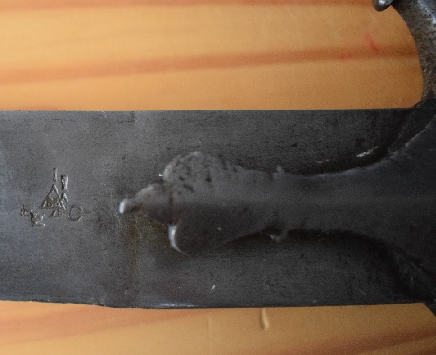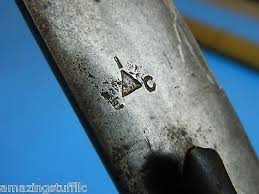A couple of days ago, I purchased an antique tulwar and I noticed some strange marks on the hilt and near the ricasso. They appear to read EIC, but I'm not sure what to make of them. The only other post that appeared to discuss the same marks didn't give a definitive answer (http://www.vikingsword.com/vb/showthread.php?t=12931), so I was hoping some of you would be able to shed some light on it. As far as I know the letters don't stand for East India Company.
Regards,
Patrick

On the hilt

Near ricasso

[ Download ]
